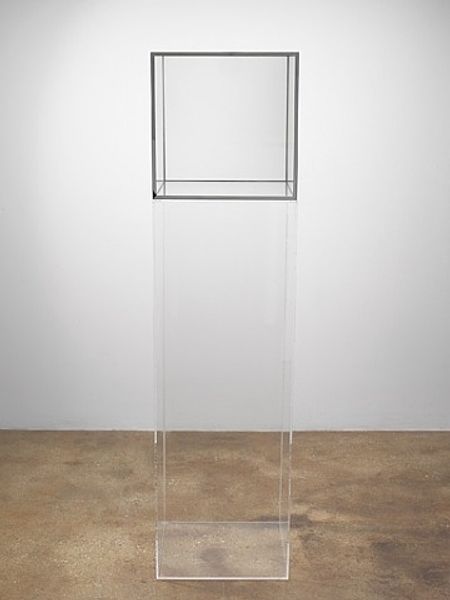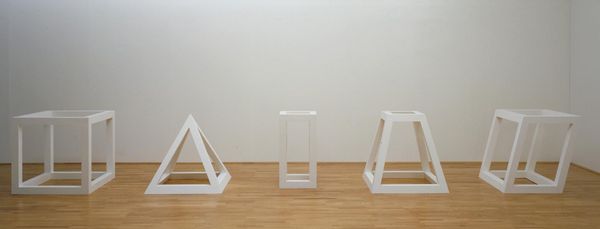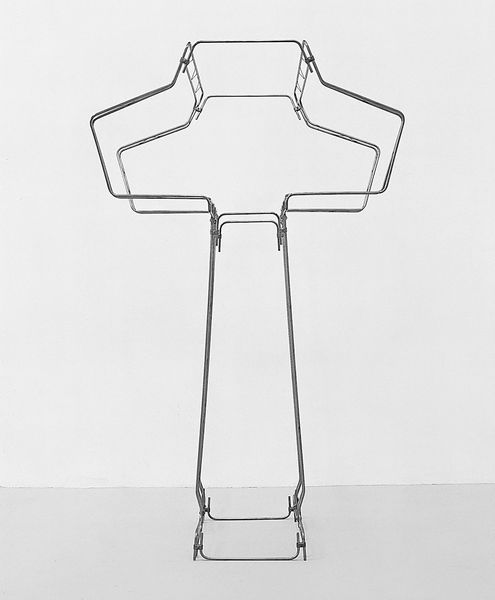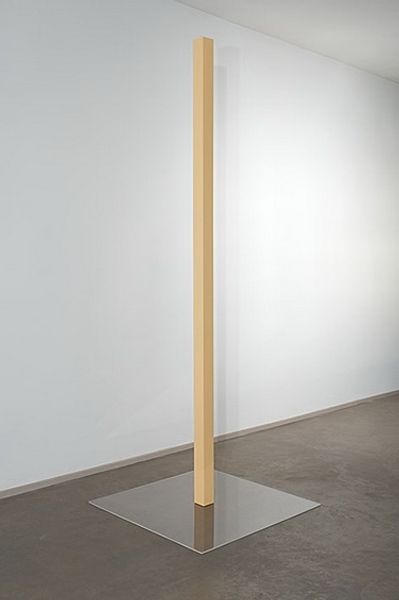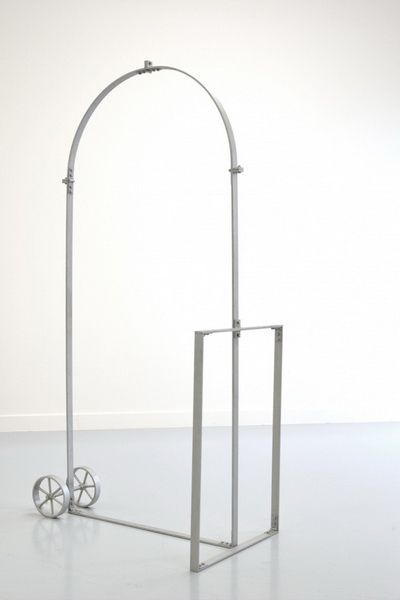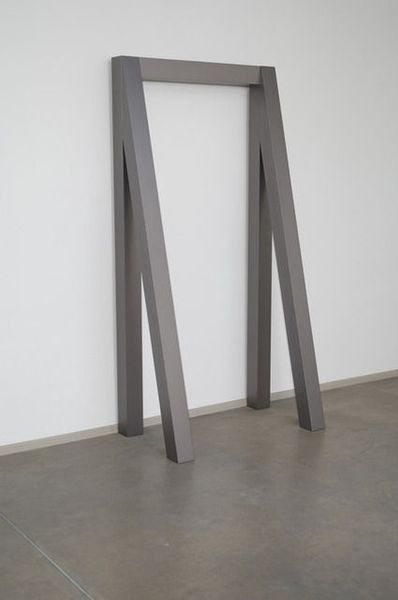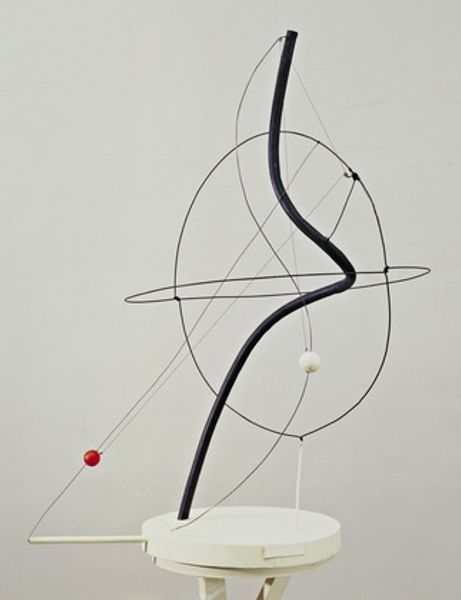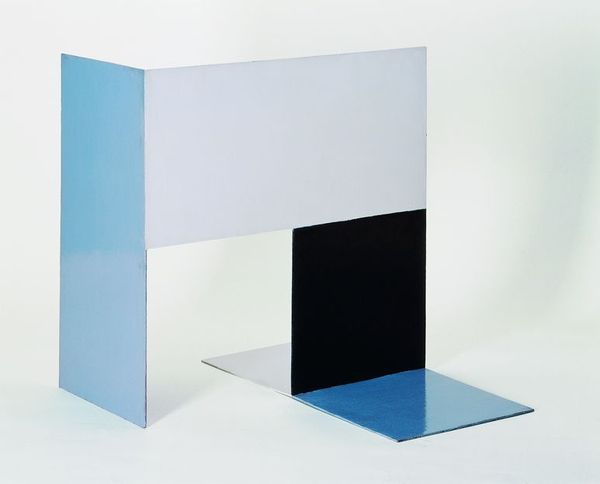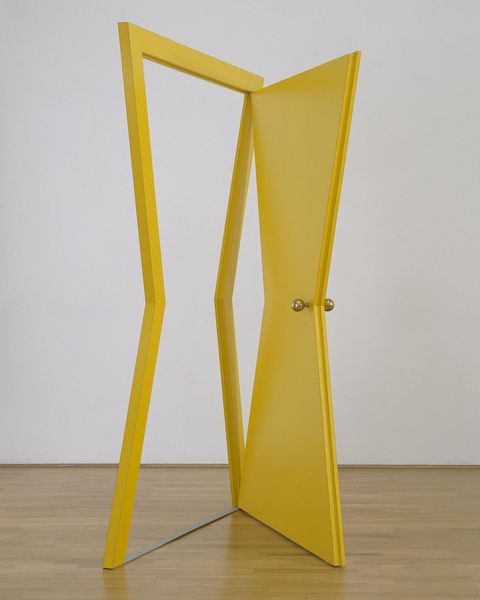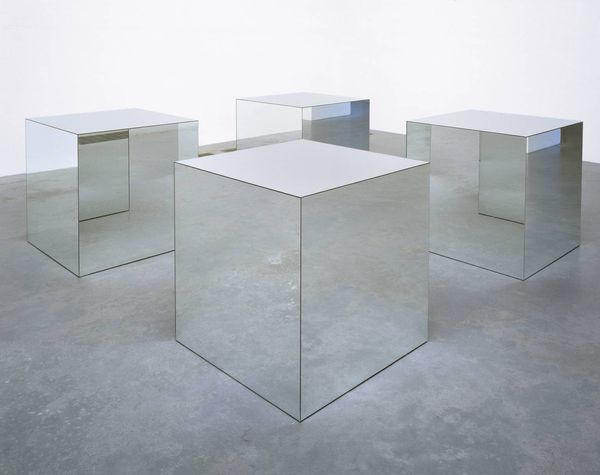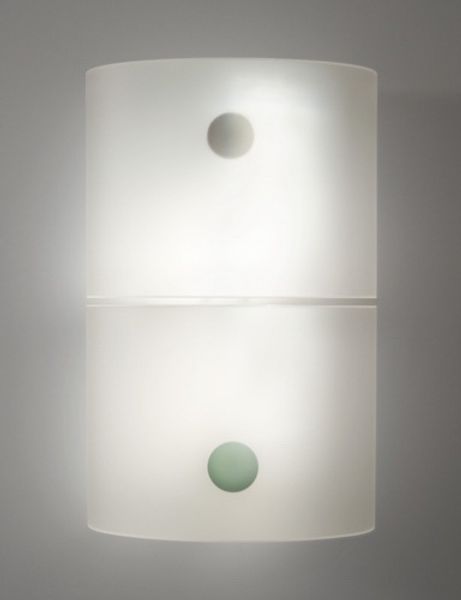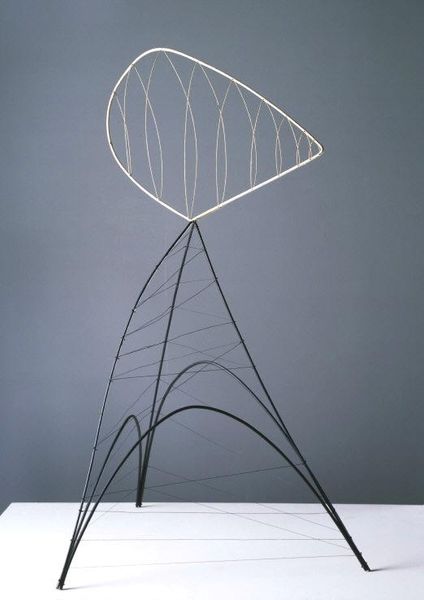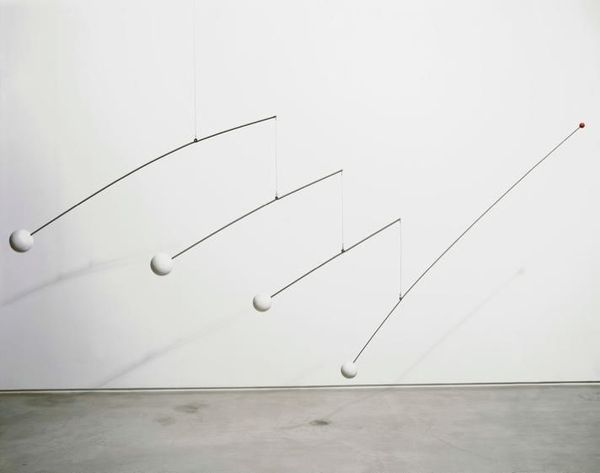
metal, glass, sculpture
#
conceptual-art
#
minimalism
#
metal
#
form
#
glass
#
sculpture
#
abstraction
#
line
Copyright: Alfio Giuffrida
Curator: Standing before us is Alfio Giuffrida's "Markenzeichen," created in 1997. It is constructed from metal and glass. Editor: My first impression is a sort of delicate industrial minimalism. The stark lines and combined materiality gives a cold yet intriguing mood. What's the context here? Curator: Giuffrida often explores the role of form and abstraction. His work invites us to reflect on how institutional frameworks such as galleries impact the display, and thus, our understanding of the artwork. There's a clear move towards conceptual art and minimalism at play. Editor: Absolutely, and consider the material choice—the glass base providing literal transparency contrasting with the solid metal figures. The labor that goes into shaping both those materials, from industrial processes to artisanal skill, are present yet somewhat invisible. This piece, through its making, asks a broader question about the distinction between artistic and industrial production, isn't it? Curator: I agree. Giuffrida engages with that dialectic. The use of these manufactured materials reflects the period’s broader move towards deconstructing traditional ideas of artistic creation, in parallel with conceptual art's broader critique of the art market's increasing commodification of unique artworks. Editor: The repetition and simplified shapes feel almost like stylized trademarks. There's something about the geometry that suggests bodies—maybe mannequins or abstract human forms—being objectified. They become just another logo. It highlights consumer culture and our desire to categorize, label, and claim identities. Curator: Indeed, a mark to be recognized within a controlled exhibition context, playing with visibility and display, even in a museum setting. These 'trademarks' are not advertising something tangible; rather they point to a symbolic function of identity. Editor: A compelling paradox—using seemingly mass-producible techniques to present a commentary on the uniqueness, or lack thereof, in art and culture. It also prompts questions on authorship and production practices in contemporary sculpture. Curator: So, in essence, we are presented with an investigation of the social narratives embedded within minimalist abstraction and the role of the gallery space in framing our perception of art. Editor: Exactly! It shows us that even what appears stark and simple can hold layers of thought regarding social and manufacturing practices.
Comments
No comments
Be the first to comment and join the conversation on the ultimate creative platform.
